Witnessing your Golden Retriever limping can be a distressing experience. Without knowing the exact cause or severity of the injury, it’s easy to fear the worst.
However, before rushing your furry friend to the veterinary emergency room, it’s important to understand that the reason behind your Golden Retriever’s limping, whether it affects the front or hind legs, could be relatively minor.
If your Golden Retriever is limping, it could be from minor issues like a small paw injury or a muscle strain to more serious conditions such as arthritis or hip dysplasia. Sometimes, it might just be a thorn or a piece of glass stuck in their paw. Overexertion during play or a misstep during a walk can also cause temporary limping.
From minor injuries to more serious health concerns, we’ll explore the causes of limping in your Golden Retriever and what they mean for your furry friend’s well-being.
We’ll also provide insights on how to best support and care for your dog during this challenging time, particularly when it’s time to visit a veterinarian.
Understanding why your Golden Retriever is limping is the first step towards helping them regain their joyful stride.
Let’s begin!
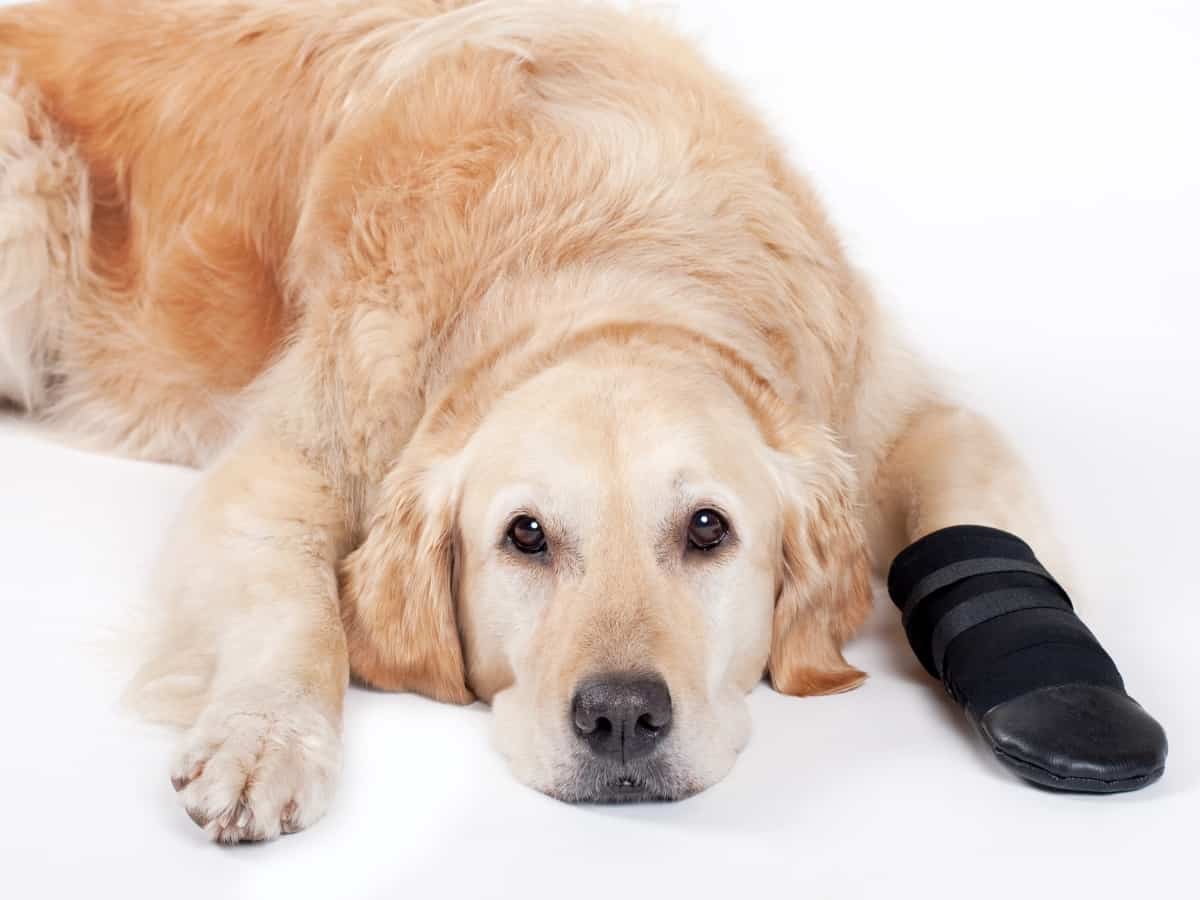
Troubleshooting Your Golden Retriever’s Limp
Limping in dogs is quite common and occurs when your dog cannot walk normally due to weakness or pain.
Your dog may walk slowly or with difficulty and usually favors one leg. Limping may occur on your Golden Retriever’s front legs or back legs.
There are two types of limps that Golden Retrievers have: The gradual limp and the sudden limp.
The gradual limp can be noticed increasing across a long period, while the sudden limp is often seen immediately after an injury or accident.
Let’s look at the 21 potential reasons for your Golden Retriever’s limp:
1. Paw Injury
Check your dog’s paw for a thorn, a piece of glass, or a nail. Such foreign bodies can cause lacerations. If this is why your dog’s limp, he will be licking his paw incessantly.
Burns caused by scorching sidewalks or frostbite can also cause your Golden Retriever to limp. Get your dog some booties or paw protectors in extremely hot or cold temperatures.
2. Overexertion
Too much of a good thing, such as fetch, intense running, or rough play with other dogs, can leave your Golden Retriever sore and hobbling with a muscle strain. However, most dogs will recover quickly after a couple of rest days.
3. Injuries To Toenails
Examine your Golden Retriever for ingrowing or overgrown toenails, as these can cause discomfort and pain when they dig into the skin. My dog once suffered a dewclaw injury, so make sure you also keep these trim.
4. Insect Sting or Animal Bite
Your dog might be limping because his paw has been stung. Stings and bites on the paw aren’t rare, especially in the summer. Aside from insect bites, animal bites can also cause a limp. Early detection is vital because bites can lead to infections.
5. Sprain
A stretched muscle or torn ligament can result in a sprain. Almost any active dog can sprain his leg because activities as simple as jumping can lead to awkward landings. If your Golden Retriever sprains his foot, he will hesitate to put weight on it for a while.
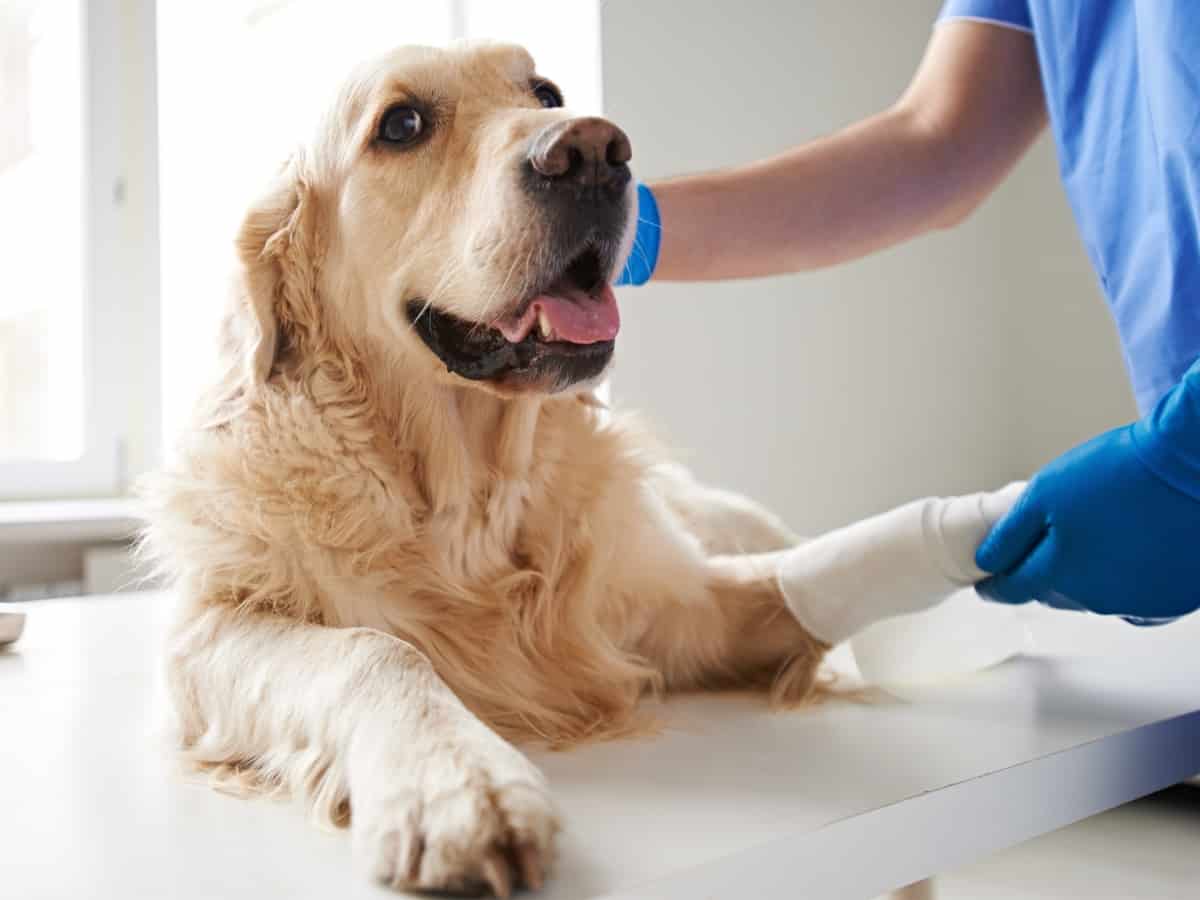
6. Fracture
A broken leg should be suspected if the limping occurred suddenly. Broken bones may not always be visible. Your dog won’t be able to bear any weight down on a fractured bone and will be in pain.
7. Hip and Elbow Dysplasia
Dysplasia is a common hereditary condition causing hip and elbow joints to become loose and move out of position.
The OFA has collected statistics on hip dysplasia (and other joint conditions) for almost 50 years, and around 20% of Golden Retrievers will have abnormal hips.
Although the disease is progressive and irreversible, around three-quarters of Golden Retrievers with hip dysplasia can live a comfortable life with ongoing management, such as exercise modification and anti-inflammatory and painkilling medication.
8. Osteoarthritis
Older and larger dogs are more at risk of this chronic, painful disease. It results in joint inflammation caused by cartilage deterioration. Signs include lameness, stiffness, or difficulty in getting up.
My dog Willow has osteoarthritis of her lower spine. Her initial symptoms were lameness of the rear leg and difficulty getting up.
However, it is managed pretty well (along with her hip dysplasia) with prescribed medication and exercise adjustments.
I also give her YuMOVE hip and joint supplements from Amazon. My vet recommended these; they get good reviews online, and they seem to be working for her.
Note: Clicking the above link(s) will take you to Amazon or an online store where we have an affiliate relationship. If you make a purchase, we may earn a commission at no additional cost to you.
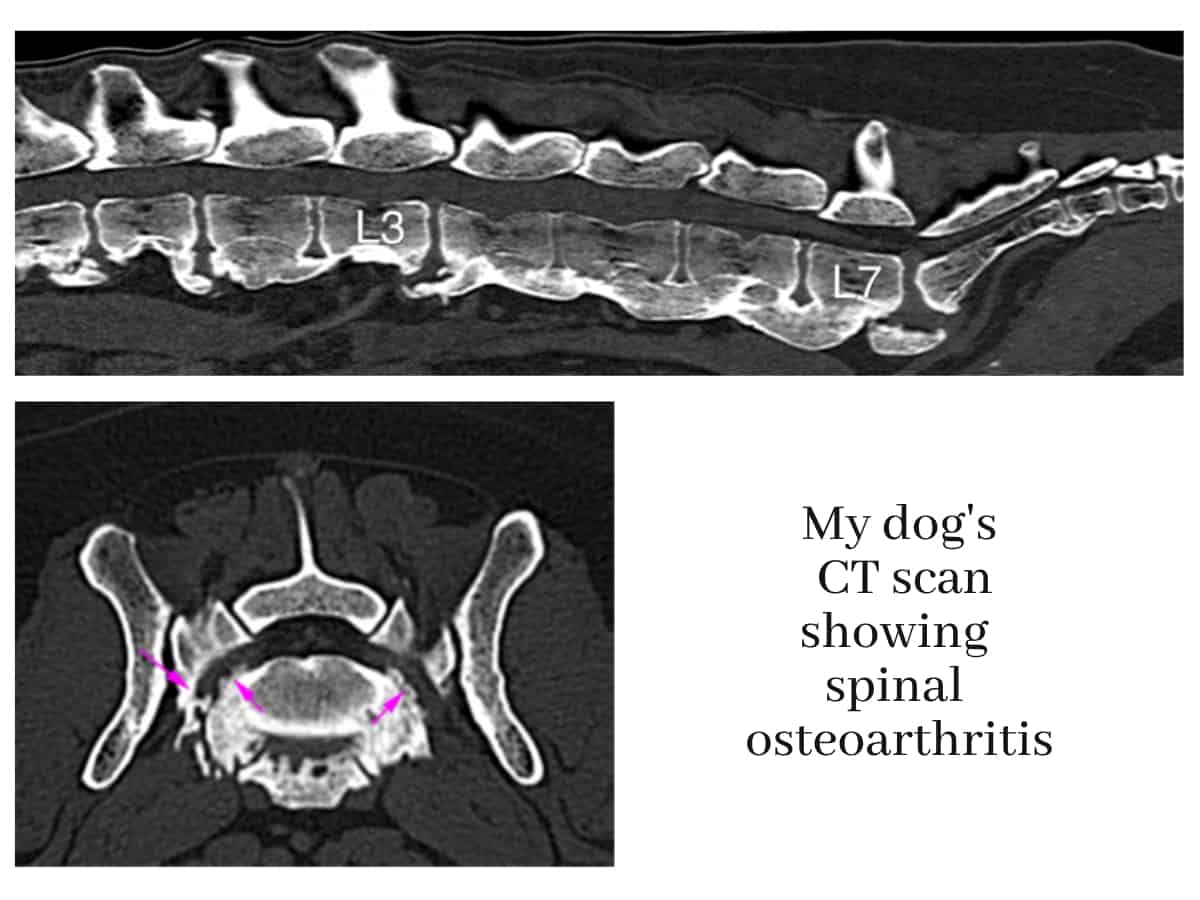
Willow also has a good orthopedic dog bed. She has the Big Barker, the only dog bed clinically proven to reduce pain and joint stiffness. I’ll admit, it’s pricey, but it comes with a 10-year guarantee, so it virtually lasts your dog’s lifetime.
In any case, I’m more than happy to pay for something that eases my dog’s discomfort. Here’s my review of the Sofa Bed.
9. Luxating Patella (dislocated knee)
Luxating patella is when your dog’s kneecap moves out of its natural position. It is one of the most common orthopedic conditions in dogs. Many small breeds are prone.
However, many larger breeds, including the Golden Retriever, are now affected. Your dog may be in pain and won’t want to bear weight on the limb.
10. Cruciate Ligament Injury or Disease
A cruciate ligament injury damages the ligaments that hold the knee together. It is similar to a sprain but is more serious. If the ligaments weaken due to a disease, the limp is gradual. If they are torn because of a sudden twist or jump, the limp is sudden.
11. Degenerative Myelopathy
Older dogs are at risk of this inherited neurologic disorder that affects the spinal cord, causing a gradual paralysis of the back end. Symptoms are weakness, lameness in the hind legs, difficulty rising, loss of muscle in the rear legs, and incontinence.
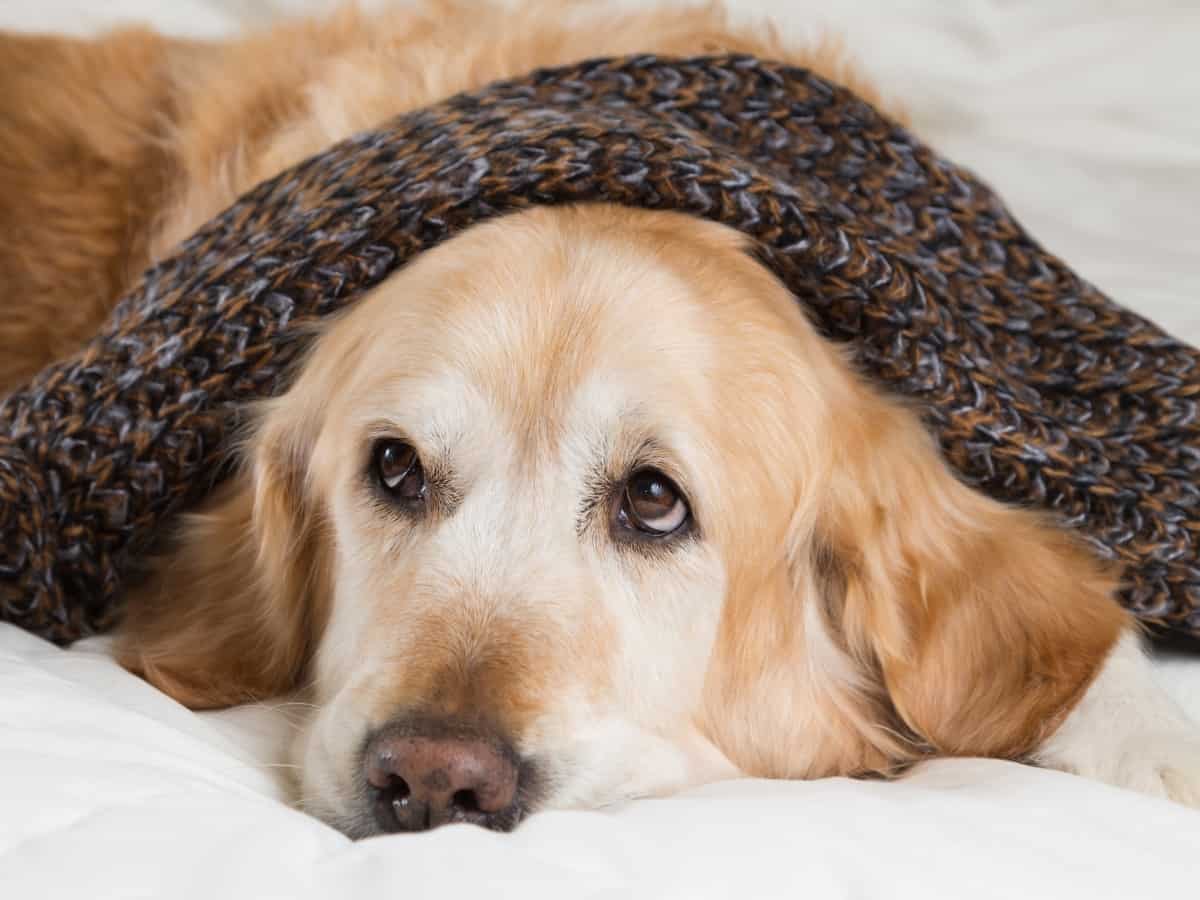
12. Infection
An infection can cause pain in your dog’s paw or leg. This can make it harder for him to walk straight, and he may develop a limp.
If you notice inflammation and find your dog licking or chewing the site, he may need a course of antibiotics. Use a pet cone to prevent further chewing and consequent infection worsening.
13. Lyme Disease
This bacterial illness transmitted by certain ticks can cause intermittent lameness. Remember to keep updated with your Golden Retriever’s flea and tick prevention.
14. Panosteitis (Growing Pains)
This condition affects the long bones of the legs due to painful inflammation. Panosteitis in dogs tends to affect growing large breed pups aged 5-12 months, including the Golden Retriever.
A shifting lameness from one bone to another is caused and can occur over several weeks or months.
15. Hypertrophic Osteodystrophy (HOD)
This is a bone disease occurring in fast-growing large dogs, usually between 3 and 5 months old.
Golden Retrievers aren’t as likely to suffer from Hypertrophic Osteodystrophy as other predisposed breeds, including the Labrador, German Shepherd, or Rottweiler, but it is not out of the question as some medium-sized breeds are prone, such as the Pitbull.
Like panosteitis, signs will be a slight limp and pain in the affected bone.
16. Osteochondritis Dissecans (OCD)
OCD is a cartilage disease whereby inflammation causes the cartilage to separate from the bone. The shoulder is most commonly affected, but it can also appear in the elbow, hip, and knee. It occurs when large puppies grow too quickly.
Limping, lameness, and pain are symptoms. Golden Retrievers are predisposed to Osteochondritis Dissecans, but scientists have not identified the genes involved.
17. Intervertebral Disk Disease (IVDD)
Large and small breeds can get disc disease, which can occur anytime.
Hind limb weakness, paralysis, or urinary incontinence are symptoms of this spinal disease. The signs vary depending on the severity of the spinal cord damage and which disc along the spine is impacted.

18. Diabetic Neuropathy
If diabetes is untreated, excessive glucose can cause progressive weakness or paralysis due to nerve damage. However, this condition is rare in dogs.
19. Immune Mediated Polyarthritis
This immune system disorder causes inflamed, swollen, and painful joints. Your dog will be reluctant to walk – or he will hobble on one or more legs due to the pain.
20. Congenital Limb Deformities
Abnormally developed limbs can cause limping in your dog. These are rare, and this study on three dogs’ congenital deformities of the distal extremities highlighted that little is known about the causes.
21. Osteosarcoma (Bone Cancer)
Bone cancer is more common in canines than in any other species. Bone tumors can rapidly grow, causing limping and pain, particularly in leg bones. It’s more prevalent in large and giant breeds. Limping can vary from mild to severe.
Treating a Limping Golden Retriever at Home
Knowing how to treat your limping Golden Retriever at home by giving first aid is necessary to help minimize any further injury or pain.
- Firstly, locate the affected leg.
- Then, assess whether your dog needs medical help.
To treat a limping Golden Retriever at home, gently examine your dog, starting at the paw. Check the pads and between the toes, and slowly work your way up, looking for cuts, bruises, or foreign bodies.
Gently manipulate the joints for stiffness, but do not attempt any examination if your dog is in a lot of pain.
Watch How to Examine Your Dog’s Limp In This Video…
Here are some simple first-aid tips for non-emergency cases. This advice is from an abstract courtesy of VCA Hospitals:
- Foreign bodies between the toes. Remove the object and clean the wound with anti-bacterial soap. Soak your dog’s paw in warm water with Epsom salts to relieve swelling. Then, apply antibiotic ointment.
- Cut or torn pads and broken nails. Control the bleeding by applying pressure to the wound with a clean towel and raising the leg. Take your dog to the vet if you cannot stop the bleeding in 10-15 minutes. Apply a bandage and change daily.
- Burned paw pads. Soak your Golden Retriever’s foot in room-temperature water. Contact your veterinarian if his pad becomes discolored or if the tissue underneath becomes exposed. Apply antibiotic ointment to the burned pad, bandage it, and change it daily.
- Swelling due to a sprain or bruising. Apply ice packs to the area for 15 minutes twice a day. Place your dog in the bath, swirl the water around his leg, or spray with a hose for 15 minutes twice daily. Flowing water reduces swelling, improves circulation, and helps with healing.
- Abscesses. Apply warm compresses to the affected area or soak in a warm Epsom salt bath. If the abscess bursts, take your dog to the vet to clean the wound and get antibiotics.
- Lame dogs. Confine lame dogs and restrict their activity.
Your Golden Retriever will have a better chance of recovery if you provide first aid when appropriate and seek prompt veterinary care.
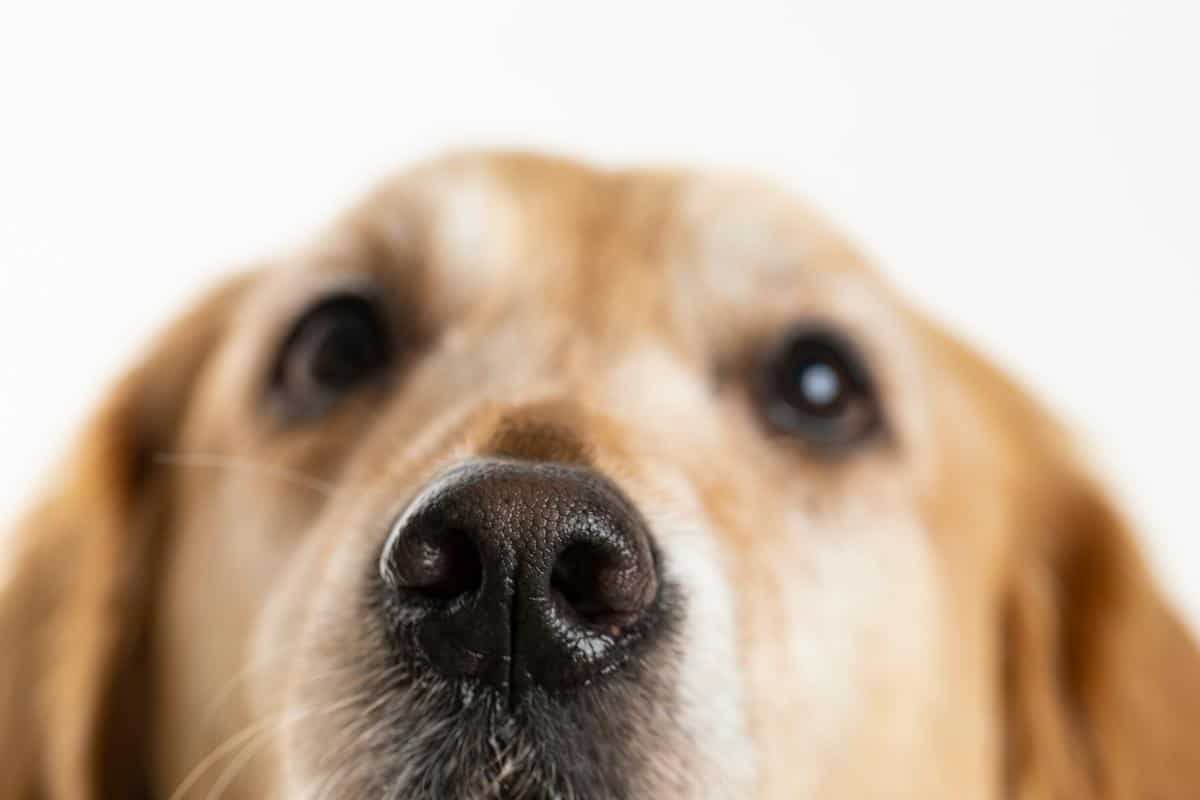
When To See The Vet
If a yelp accompanies your Golden Retriever’s limp and doesn’t resolve itself, you must see the vet.
In general, if any of the following are present, it’s time to get your dog some help:
- Moderate to severe swelling
- A broken or dislocated limb
- A limb that feels hot to the touch
- Lameness in combination with a fever
FAQs
Is Limping Common In Golden Retrievers?
Golden Retrievers are prone to conditions that may cause limping, such as hip dysplasia or arthritis. However, limping is also a common way of dealing with an injured paw or limb.
Limping is often not a medical emergency but is definitely a symptom of something being wrong. It could be something as shallow as a thorn lodged in your dog’s paw or as complicated as a bone deformity.
Why Is My Golden Retriever Limping on His Front Leg?
Your Golden Retriever is limping on his front leg because something might be stuck to the paw pad, such as a thorn. The paw pad might be injured, or it could be a broken toenail. If there is no surface problem, the limp might be due to ligament damage, a soft tissue injury, or arthritis.
Why Is My Golden Retriever Limping on His Back Leg?
Your Golden Retriever’s limping on its back leg could be due to injuries like sprains or strains, especially after vigorous activity. It might also indicate more serious conditions such as hip dysplasia, common in larger breeds, or a cruciate ligament injury. Arthritis is another possibility, particularly in older dogs. Less commonly, it could be a sign of a neurological issue or a foot or nail problem.
Final Thoughts
You’re now equipped with knowledge of 21 potential reasons why your Golden Retriever might be limping. While limping is a common occurrence in dogs, it’s important to remember that it’s not a “normal” behavior. Limping is a dog’s way of coping with pain and avoiding discomfort while walking.
Your dog can’t verbally express pain, but the insights gained from this post can guide you in identifying the nature and severity of the injury. If your dog starts limping suddenly, it’s likely due to an injury.
On the other hand, a gradually developing limp may suggest an internal health issue. Awareness of these signs is crucial in providing the best care for your furry companion.





